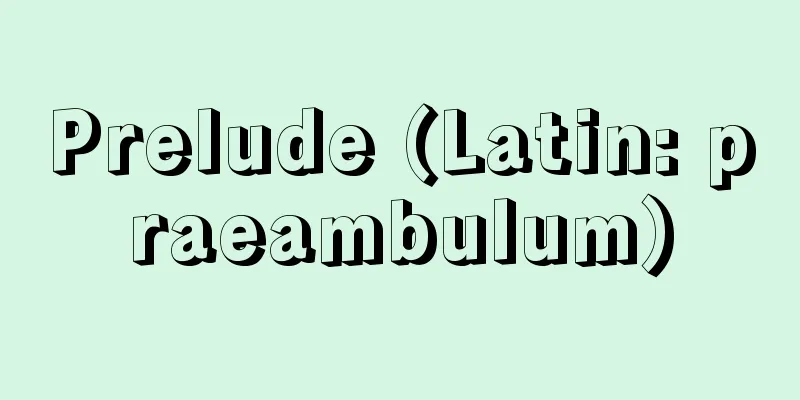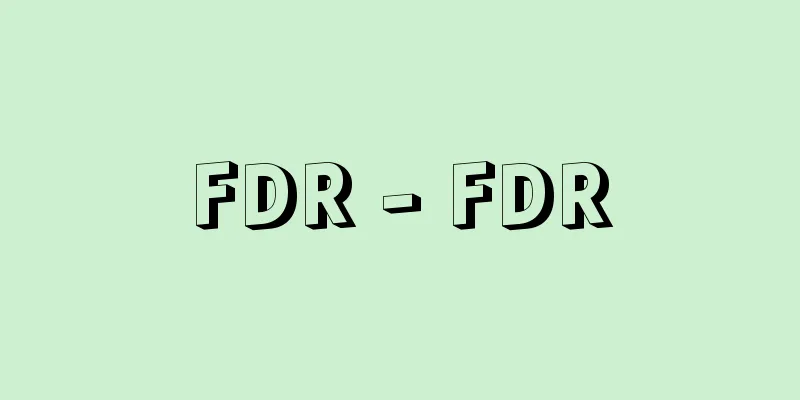Prelude (Latin: praeambulum)

|
An introductory instrumental piece. Styles and forms vary greatly depending on the era and region. (1) In the past, it was improvised to check the tuning of instruments such as lutes and organs, or to teach a chorus the mode and pitch of a piece. From around the 15th century, independent pieces with elegant running lines and alternating chords appeared. (2) From the 17th to 18th centuries, it played an important role as the opening movement of a dance suite. In Germany, tight contrapuntal writing was common, while in France, a type with a strong improvisational character called "prélude non mesuré" (prelude without beat) was preferred. (3) Around the same time, North German organists developed a unique form combined with fugue (J.S. Bach's "Preludes and Fugues" BWV 531-552, "The Well-Tempered Clavier" in two volumes). This form disappeared once in the late 18th century, but was revived with the rediscovery of Bach in the mid-19th century, and can be seen in the piano and organ pieces of Mendelssohn, Brahms, Franck, and Reger. (4) In the organ music of German Protestants (Lutherans) in the 17th and 18th centuries, a new form of short piece using chorale melodies (chorale prelude) was born. (5) In the 19th century, pieces without the function of an introduction appeared. Especially after Chopin's "24 Preludes" (1836-39), a collection of piano pieces using 24 major and minor keys began to be written (Rachmaninoff, Alkan). In Debussy's two-volume "Preludes" (1909-10, 1910-12), each of the 12 pieces in the book is given a title such as "The Girl with the Flaxen Hair." There are also independent orchestral pieces, such as Liszt's symphonic poem "Prelude" and Debussy's "Prelude to the Afternoon of a Faun." (6) Since Wagner, the term has been used for the overtures of entire operas or individual acts (Wagner's "Lohengrin," "Die Meistersinger von Nuremberg," "Tristan and Isolde," as well as Verdi and Meyerbeer). [Toshiko Sekine] Source: Shogakukan Encyclopedia Nipponica About Encyclopedia Nipponica Information | Legend |
|
導入的性格をもつ器楽曲。時代や地域によって様式や形式がまったく異なる。(1)古くは、リュートやオルガンなどの楽器の調律を確認したり、合唱に曲の旋法や音高を教えるために即興で奏された。15世紀ごろから、華麗な走句と和音が交代する独立した作品が現れる。(2)17世紀から18世紀にかけては、舞踊組曲の冒頭楽章として重要な役割を果たす。ドイツでは対位法による緊密な書法が多いのに対して、フランスでは「拍節のない前奏曲prélude non mesuré」とよばれる即興的性格の強いタイプが好まれた。(3)同じころ、北ドイツのオルガン奏者は、フーガと組み合わせた独特の形式を発展させていた(J・S・バッハ作曲『プレリュードとフーガ』BWV531~552、『平均律クラビーア曲集』二巻)。この形は18世紀後半に一度姿を消すが、19世紀中ごろのバッハ再発見とともに復活、メンデルスゾーン、ブラームス、フランク、レーガーのピアノ曲やオルガン曲にその例がみられる。(4)17、18世紀のドイツ・プロテスタント(ルター派)のオルガン曲では、コラール旋律を用いた小品(コラール前奏曲)という新しい形式が生まれた。(5)19世紀に入ると、前奏の機能をもたない作品が登場する。とくにショパンの『24の前奏曲』(1836~39)以後、24の長短調を用いたピアノ曲集が書かれるようになった(ラフマニノフ、アルカン)。ドビュッシーの二巻の『前奏曲集』(1909~10、1910~12)では、各巻の12曲それぞれに『亜麻(あま)色の髪の乙女』などの標題が付されている。また、リストの交響詩『前奏曲』や、ドビュッシーの『牧神の午後への前奏曲』のように、独立した管弦楽曲もある。(6)なお、ワーグナー以後、オペラ全体もしくは各幕の序曲に、このことばが用いられている(ワーグナーの『ローエングリン』『ニュルンベルクのマイスタージンガー』『トリスタンとイゾルデ』をはじめ、ベルディ、マイヤベーアなど)。 [関根敏子] 出典 小学館 日本大百科全書(ニッポニカ)日本大百科全書(ニッポニカ)について 情報 | 凡例 |
<<: Memorial service for a thousand monks - Sensoukuyo
Recommend
Ache people - Ache people (English spelling) Achenese
An ethnic group living in the north of Sumatra, In...
Freshwater algae - Tansui-sou
A term for seaweed. In addition to algae that gro...
Zhang Zǎo (English name)
A Chinese painter from the mid-Tang Dynasty. Dates...
Unpyo Magazine - Unpyo Magazine
Essays from the mid-Edo period. 4 volumes, 4 book...
Yoshihide Otsubo
Year of death: 1407 Year of birth: 1324 An equestr...
Mordellistena
…The thoracic legs are small and the claws are de...
Gnom (English spelling) [Germany]
A spirit of earth in the 16th century alchemist Pa...
Itobu
The percentage of raw silk obtained from a certain...
Hyperlipoproteinemia
…Hyperlipidemia is also used as a synonym. Since ...
Crested Tinamou - Crested Tinamou
...They live alone in pairs and do not form large...
Interpolation method
It refers to filling in the gaps between values ...
Yalta (English spelling) Ялта/Yalta
It is a resort city on the southern coast of the ...
OE - Oi
It is an abbreviation of "Outlook Express&quo...
Titanium carbide
Titanium carbide, also known as titanium carbide. ...
Ophichthus urolophus (English spelling) Ophichthusurolophus
...The body is gray-brown, without markings, but ...









